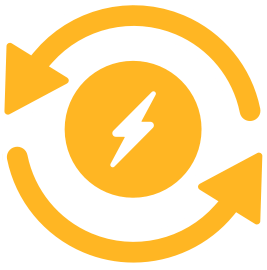| Topic: Interesting tidbits about government and laws | |
|---|---|
|
A bill has five major sections: 1.) The purpose of the bill, 2.) The body of the bill, 3.) Financing – how much does it cost and where will the money come from, 4.) Penalties for not following the law proposed by this bill, and 5.) An effective date.
A bill proposed in the House begins with “H.R.” and a bill proposal introduced in the Senate begins with an “S.” Once a proposal has been submitted, accepted, and numbered, it is referred to committee by the Speaker and the Parliamentarian. Depending on the intent and purpose of the bill, it is sent to a specific committee of congressional members or senate members for review Once the bill reaches committee, it is then open to a public hearing.These hearings are literally open to the public for comment regarding the details in the proposed bill. Once the committee has completed its review there are a number of things that could happen: 1.) it gets tabled which means the proposal is rejected and it goes no further, 2.) It comes out as a “clean bill” which means it contains some of the original content but has been amended to the point that it is a new bill – and – it receives a new number, and 3.) or it is approved with or without amendments and continues from there. If the bill is passed on to the House --Now the bill is brought up before the full House for debate After all debate and discussion is concluded the bill goes up for a vote. There are three things that happen here as well: 1.) It gets a vote to “recommit” which means it goes back to committee for further discussion, 2.) It gets voted down and proceeds no further, or 3.) It passes in the House Once the bill passes in the House, it now goes to the Senate for consideration. As with the House, the bill is brought before the full Senate for debate, discussion, and amendments. But, before it is heard, it must pass a unanimous consent vote to even be presented in the Senate. So, once everything has been done and said and a final vote is cast there are two things that happen: 1.) The bill fails and stops there, it does not pass into law, or 2.) It passes and is now sent back to the House of Representatives. after going through the Senate process there have been changes made. It would be a rare occasion where both the House bill and the Senate bill were the same. A bill can only be passed if both the House and the Senate versions are identical. So, it gets passed back to the House. If the Senate disagrees with the House amendment, or if the House disagreed with the Senate version representatives from both the House and the Senate go in to a Conference Committee to resolve the differences Once the bill has passed the Conference Committee it is sent back to the originating chamber (House or Senate) for enrollment. Enrollment is the process in which the measure (or summary of the bill) is printed on parchment paper and then signed by the Speaker of the House, the Senate Majority Leader, and the Vice President. Now – it goes to the President. The President has exactly 10 business days to sign the bill. If the bill is signed within the 10 day period, it becomes a law. The President also has the option of not passing the bill which is called a veto. If he vetoes the bill that does not necessarily mean it does not pass. Remember, our system of government is based on checks and balances. If the bill passes the Senate by a 2/3 majority (67 votes) then even if the President vetoes the bill, it still passes. So, if the President vetoes the bill and there is not a 2/3 majority vote in the Senate the bill dies and does not become law. ....SO THERE YOU HAVE IT,,lol all the steps AND PEOPLE who have to agree for a law to ever see the light of day,,,,, its not your congressperson or your presidents 'fault' ita a check and balance system where a majority of the 435 representatives and 100 senators come to an agreement together,,,, |
|
|
|
|
|
A bill has five major sections: 1.) The purpose of the bill, 2.) The body of the bill, 3.) Financing – how much does it cost and where will the money come from, 4.) Penalties for not following the law proposed by this bill, and 5.) An effective date. A bill proposed in the House begins with “H.R.” and a bill proposal introduced in the Senate begins with an “S.” Once a proposal has been submitted, accepted, and numbered, it is referred to committee by the Speaker and the Parliamentarian. Depending on the intent and purpose of the bill, it is sent to a specific committee of congressional members or senate members for review Once the bill reaches committee, it is then open to a public hearing.These hearings are literally open to the public for comment regarding the details in the proposed bill. Once the committee has completed its review there are a number of things that could happen: 1.) it gets tabled which means the proposal is rejected and it goes no further, 2.) It comes out as a “clean bill” which means it contains some of the original content but has been amended to the point that it is a new bill – and – it receives a new number, and 3.) or it is approved with or without amendments and continues from there. If the bill is passed on to the House --Now the bill is brought up before the full House for debate After all debate and discussion is concluded the bill goes up for a vote. There are three things that happen here as well: 1.) It gets a vote to “recommit” which means it goes back to committee for further discussion, 2.) It gets voted down and proceeds no further, or 3.) It passes in the House Once the bill passes in the House, it now goes to the Senate for consideration. As with the House, the bill is brought before the full Senate for debate, discussion, and amendments. But, before it is heard, it must pass a unanimous consent vote to even be presented in the Senate. So, once everything has been done and said and a final vote is cast there are two things that happen: 1.) The bill fails and stops there, it does not pass into law, or 2.) It passes and is now sent back to the House of Representatives. after going through the Senate process there have been changes made. It would be a rare occasion where both the House bill and the Senate bill were the same. A bill can only be passed if both the House and the Senate versions are identical. So, it gets passed back to the House. If the Senate disagrees with the House amendment, or if the House disagreed with the Senate version representatives from both the House and the Senate go in to a Conference Committee to resolve the differences Once the bill has passed the Conference Committee it is sent back to the originating chamber (House or Senate) for enrollment. Enrollment is the process in which the measure (or summary of the bill) is printed on parchment paper and then signed by the Speaker of the House, the Senate Majority Leader, and the Vice President. Now – it goes to the President. The President has exactly 10 business days to sign the bill. If the bill is signed within the 10 day period, it becomes a law. The President also has the option of not passing the bill which is called a veto. If he vetoes the bill that does not necessarily mean it does not pass. Remember, our system of government is based on checks and balances. If the bill passes the Senate by a 2/3 majority (67 votes) then even if the President vetoes the bill, it still passes. So, if the President vetoes the bill and there is not a 2/3 majority vote in the Senate the bill dies and does not become law. ....SO THERE YOU HAVE IT,,lol all the steps AND PEOPLE who have to agree for a law to ever see the light of day,,,,, its not your congressperson or your presidents 'fault' ita a check and balance system where a majority of the 435 representatives and 100 senators come to an agreement together,,,, 
|
|
|
|
|
|
Then why does the president or one party get credit?
|
|
|
|
|
|
A bill has five major sections: 1.) The purpose of the bill, 2.) The body of the bill, 3.) Financing – how much does it cost and where will the money come from, 4.) Penalties for not following the law proposed by this bill, and 5.) An effective date. A bill proposed in the House begins with “H.R.” and a bill proposal introduced in the Senate begins with an “S.” Once a proposal has been submitted, accepted, and numbered, it is referred to committee by the Speaker and the Parliamentarian. Depending on the intent and purpose of the bill, it is sent to a specific committee of congressional members or senate members for review Once the bill reaches committee, it is then open to a public hearing.These hearings are literally open to the public for comment regarding the details in the proposed bill. Once the committee has completed its review there are a number of things that could happen: 1.) it gets tabled which means the proposal is rejected and it goes no further, 2.) It comes out as a “clean bill” which means it contains some of the original content but has been amended to the point that it is a new bill – and – it receives a new number, and 3.) or it is approved with or without amendments and continues from there. If the bill is passed on to the House --Now the bill is brought up before the full House for debate After all debate and discussion is concluded the bill goes up for a vote. There are three things that happen here as well: 1.) It gets a vote to “recommit” which means it goes back to committee for further discussion, 2.) It gets voted down and proceeds no further, or 3.) It passes in the House Once the bill passes in the House, it now goes to the Senate for consideration. As with the House, the bill is brought before the full Senate for debate, discussion, and amendments. But, before it is heard, it must pass a unanimous consent vote to even be presented in the Senate. So, once everything has been done and said and a final vote is cast there are two things that happen: 1.) The bill fails and stops there, it does not pass into law, or 2.) It passes and is now sent back to the House of Representatives. after going through the Senate process there have been changes made. It would be a rare occasion where both the House bill and the Senate bill were the same. A bill can only be passed if both the House and the Senate versions are identical. So, it gets passed back to the House. If the Senate disagrees with the House amendment, or if the House disagreed with the Senate version representatives from both the House and the Senate go in to a Conference Committee to resolve the differences Once the bill has passed the Conference Committee it is sent back to the originating chamber (House or Senate) for enrollment. Enrollment is the process in which the measure (or summary of the bill) is printed on parchment paper and then signed by the Speaker of the House, the Senate Majority Leader, and the Vice President. Now – it goes to the President. The President has exactly 10 business days to sign the bill. If the bill is signed within the 10 day period, it becomes a law. The President also has the option of not passing the bill which is called a veto. If he vetoes the bill that does not necessarily mean it does not pass. Remember, our system of government is based on checks and balances. If the bill passes the Senate by a 2/3 majority (67 votes) then even if the President vetoes the bill, it still passes. So, if the President vetoes the bill and there is not a 2/3 majority vote in the Senate the bill dies and does not become law. ....SO THERE YOU HAVE IT,,lol all the steps AND PEOPLE who have to agree for a law to ever see the light of day,,,,, its not your congressperson or your presidents 'fault' ita a check and balance system where a majority of the 435 representatives and 100 senators come to an agreement together,,,, 
NOTHING Is free,, especially in a capitalistic culture,,, |
|
|
|
|
|
Edited by
msharmony
on
Sat 12/31/11 03:44 PM
|
|
|
Then why does the president or one party get credit? because thats the way the people like it and the media and news sponsors pay to be on the side the people like,,,, AND because people have limited understanding of how things work, so they stop at whoever was the FIRST to propose or the last to AGREE upon a bill,, and ignore all the stuff in between,,, |
|
|
|
|








